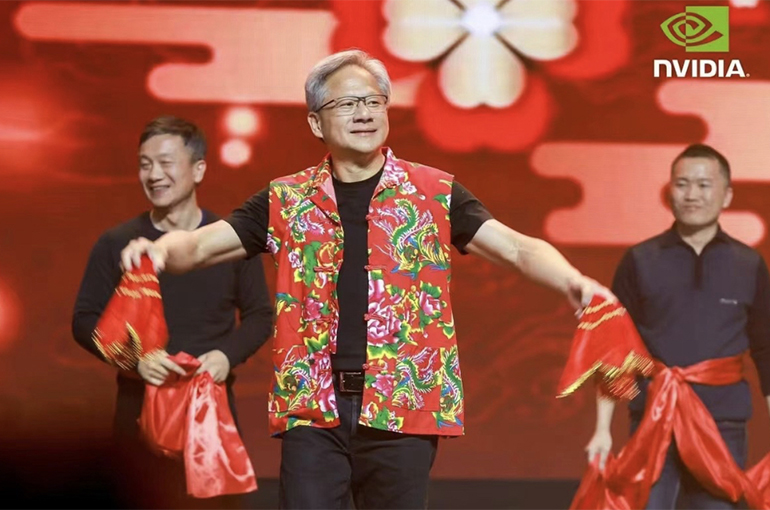 Nvidia’s CEO Visits Chinese Mainland for First Time Since Pandemic
Nvidia’s CEO Visits Chinese Mainland for First Time Since Pandemic(Yicai) Jan. 22 -- The chief executive officer of Nvidia has visited the Chinese mainland for the first time since the Covid-19 pandemic began in 2020 to attend the year-end parties of the US semiconductor giant’s subsidiaries.
Jensen Huang visited the offices of Nvidia’s units in Beijing, Shanghai, and Shenzhen last week to attend their annual parties, Yicai learned from the Santa Clara-based parent company. Huang did not meet with government officials, as his trip was mainly to spend time with Chinese employees.
During the events he attended, Huang performed the Yangko dance, a traditional Chinese folk dance from China’s northern provinces, while wearing traditional Chinese clothes, according to the pictures and videos Nvidia employees posted on social media.
Nvidia employs nearly 3,000 people in marketing, sales, research, and development in the Chinese mainland. Before the pandemic, Huang used to visit the firm’s Chinese units every year to attend their year-end parties.
The US government updated its export controls on advanced artificial intelligence chips to China on Oct. 17. Nvidia’s RTX 4090 chipset, one of the most powerful and best-performing graphics cards available in the consumer market, was also banned from being exported to China.
Therefore, Nvidia released the GeForce RTX 4090 D, an adjusted version of a gaming graphics card, in the Chinese market in December to comply with US export controls. It was the first time the company released a product specifically for the Chinese market. The company also pledged to offer three alternative options for the A800 and H800 chip lines that were included in the ban.
On Jan. 8, Nvidia launched the GeForce RTX 4070 Super, RTX 4070Ti Super, and RTX 4080 Super, priced between USD599 and USD999 apiece, before the Consumer Electronics Show in Las Vegas. The chipmaker told Yicai then that the three graphics processing units comply with US export restrictions and can be sold in China.
Nvidia’s profit soared over 1,200 percent to USD9.2 billion in the three months ended Oct. 29 last year from a year earlier, thanks to the recent AI frenzy. Revenue jumped 206 percent to USD18.1 billion in the period.
The company did not disclose what percentage of the revenue came from the Chinese market, but Huang earlier said that China contributes about 20 percent to the total.
Editors: Dou Shicong, Futura Costaglione